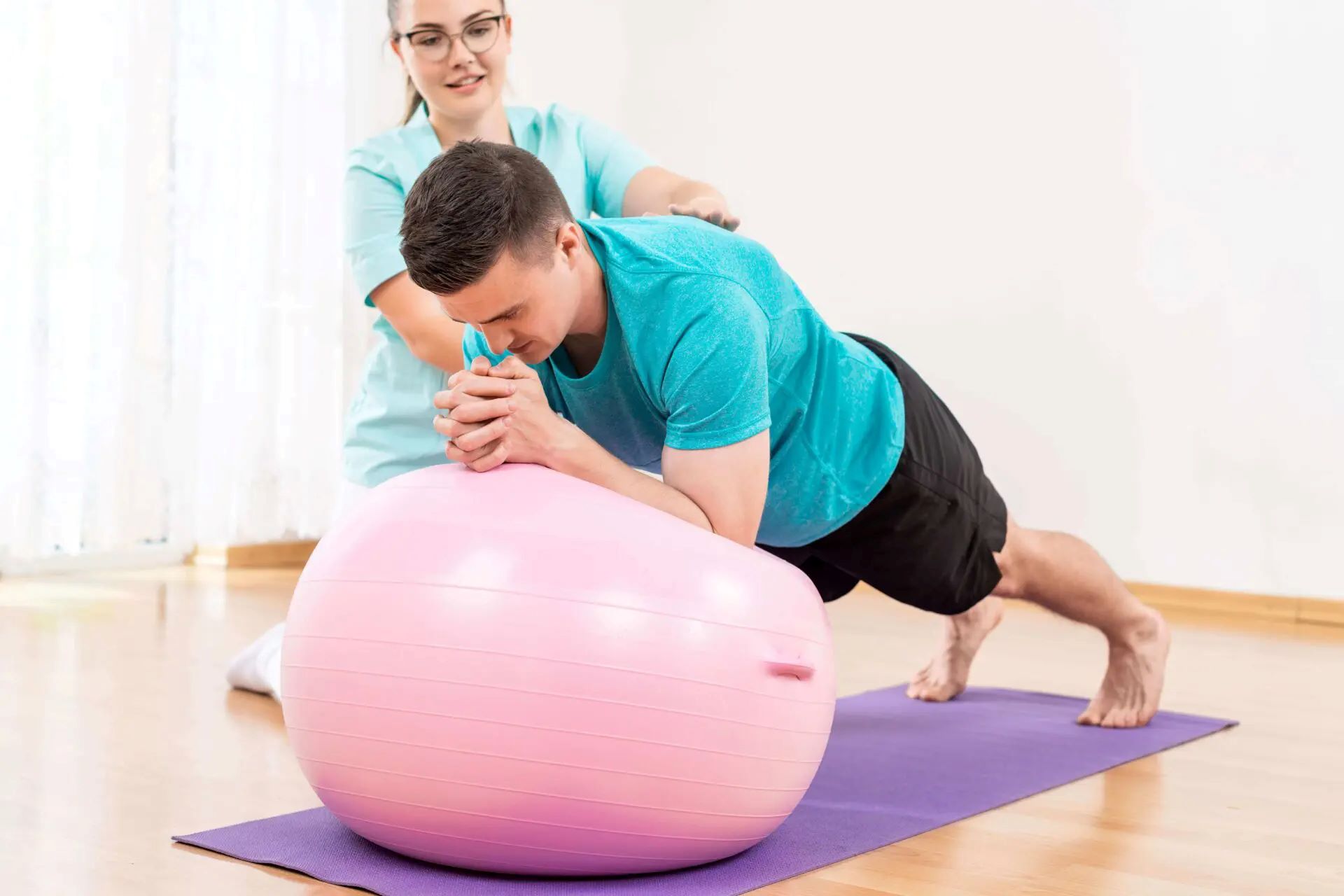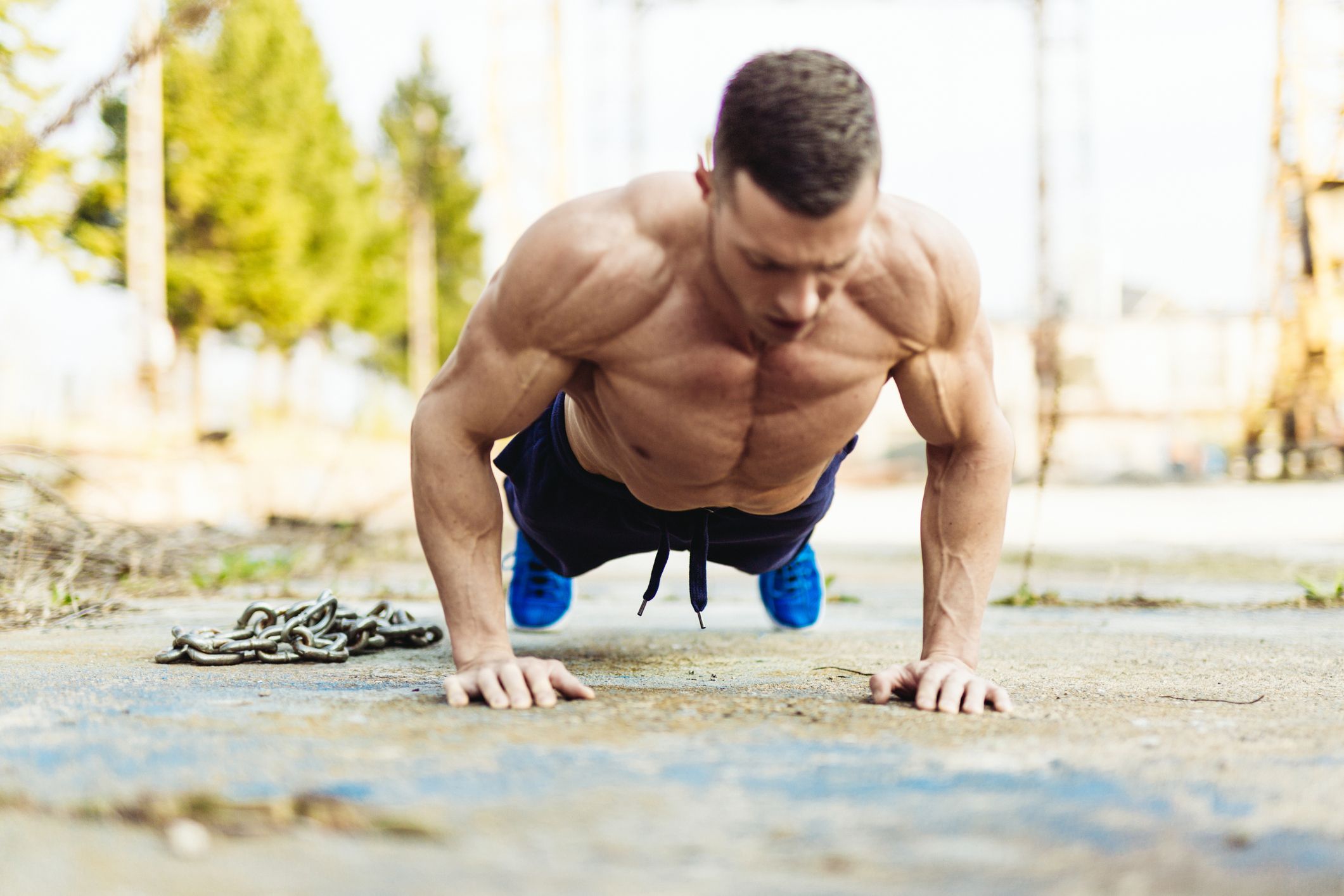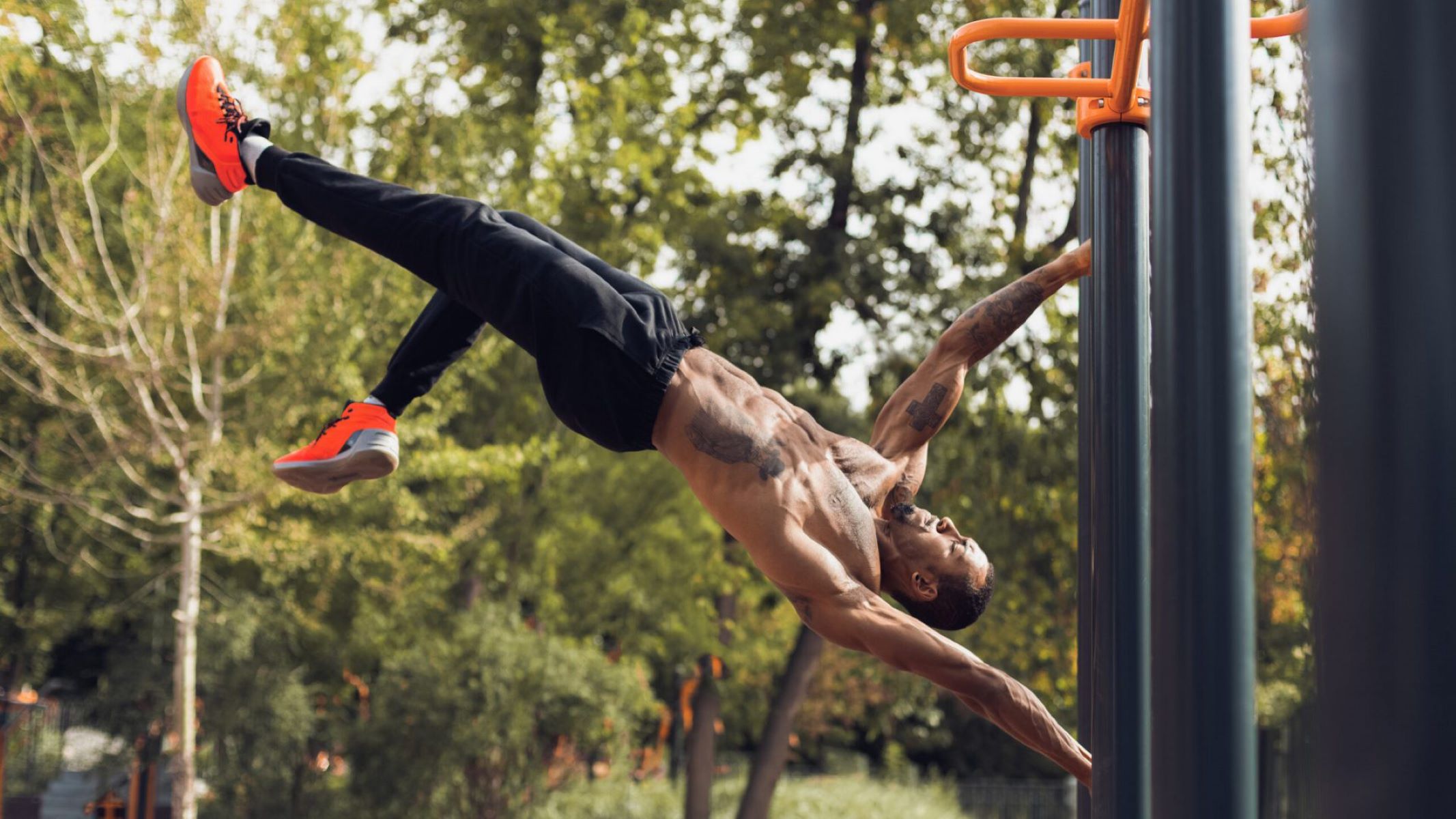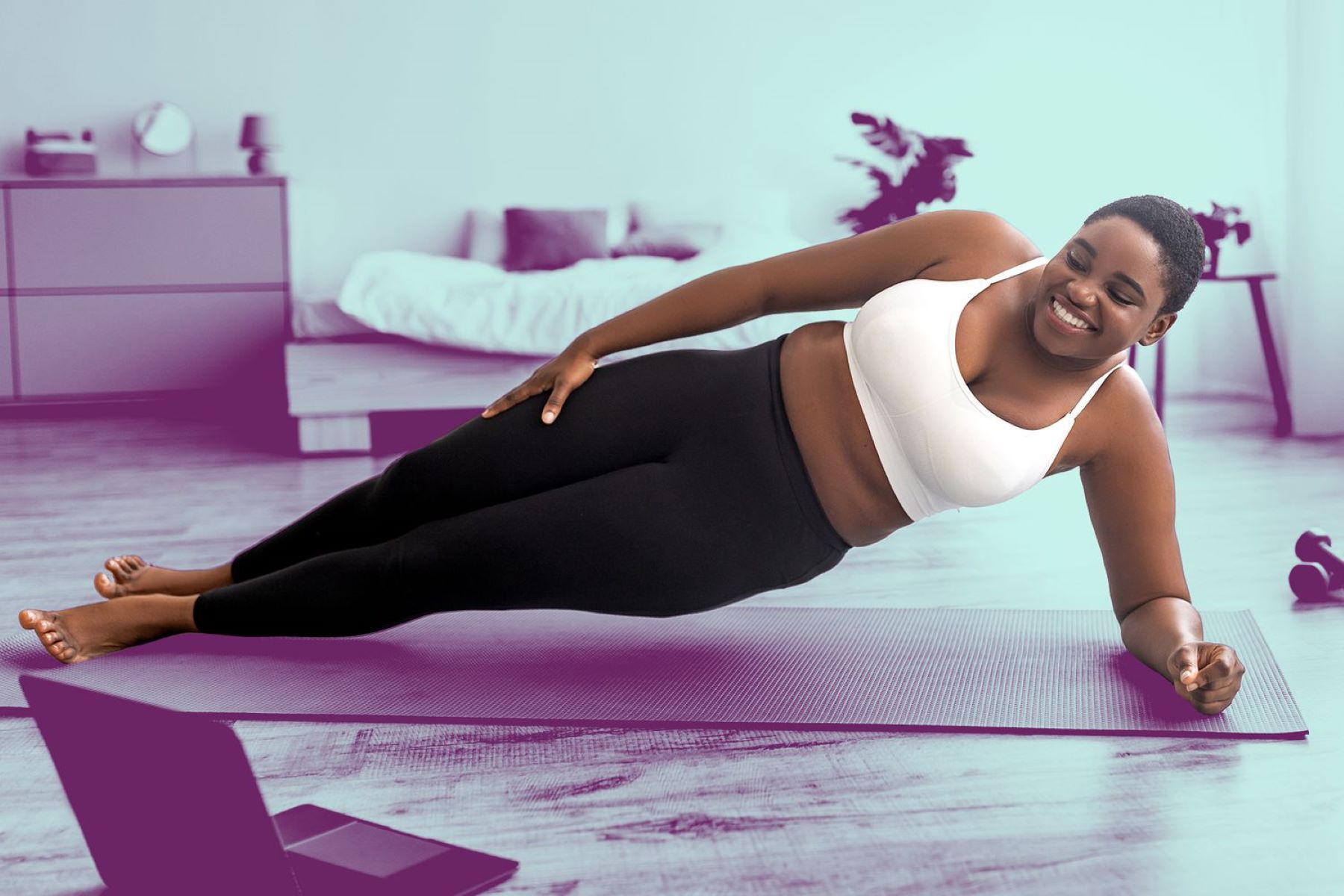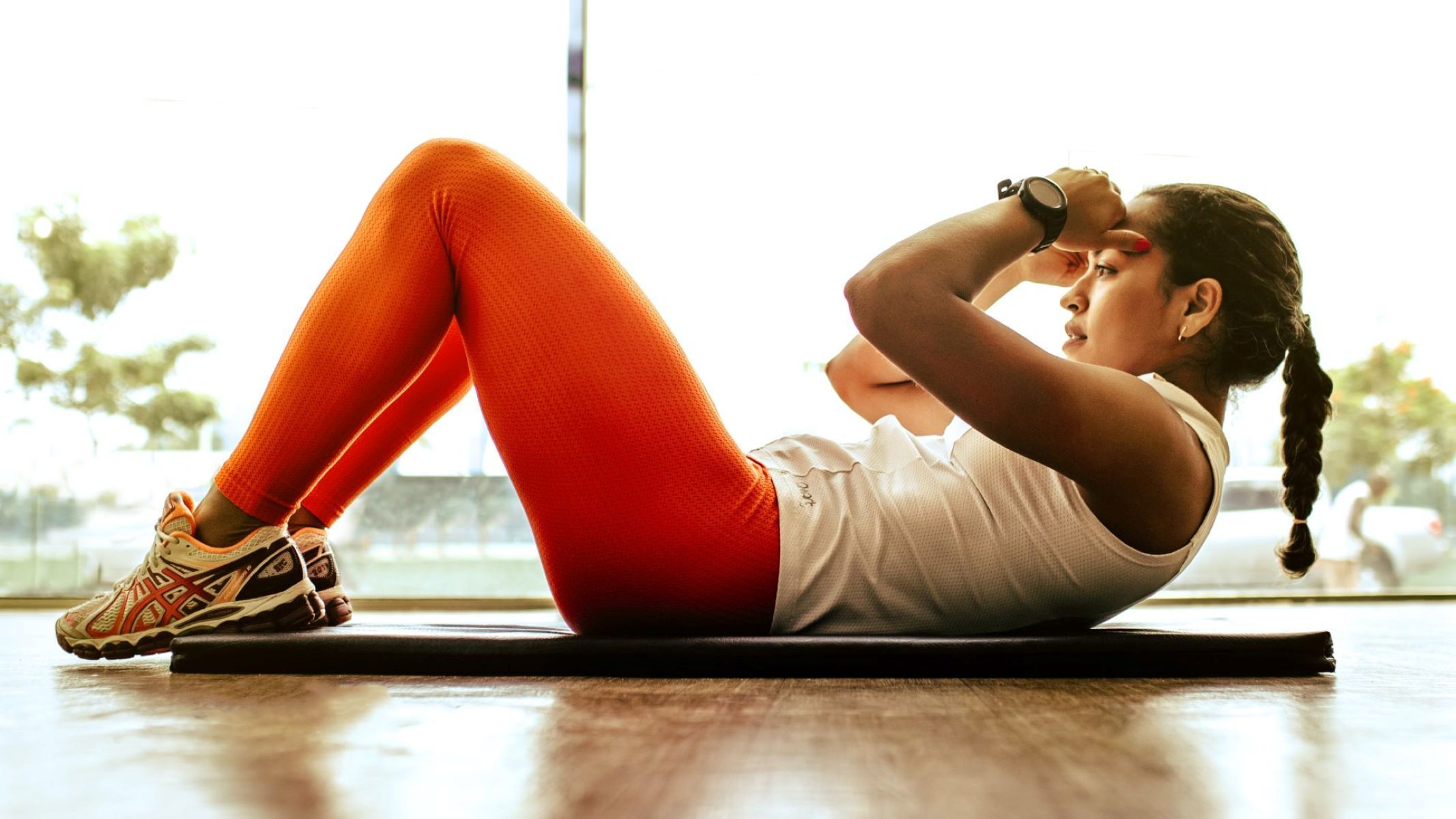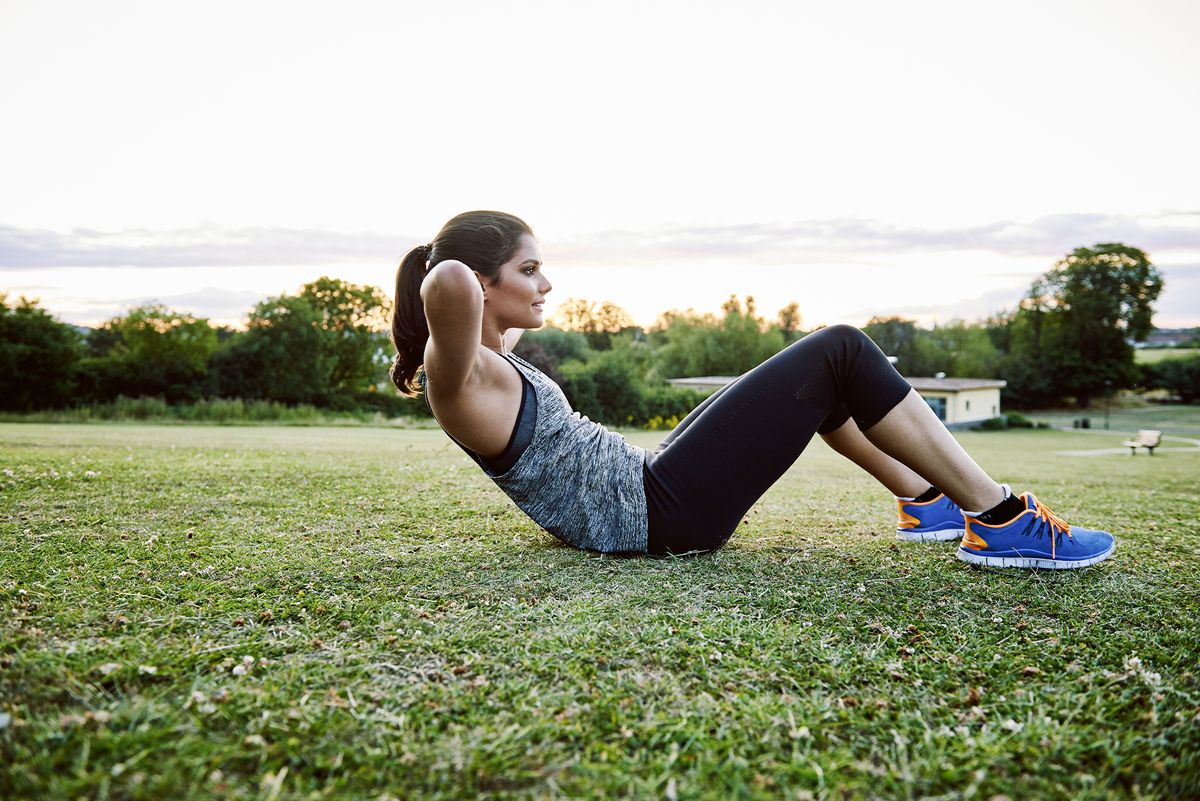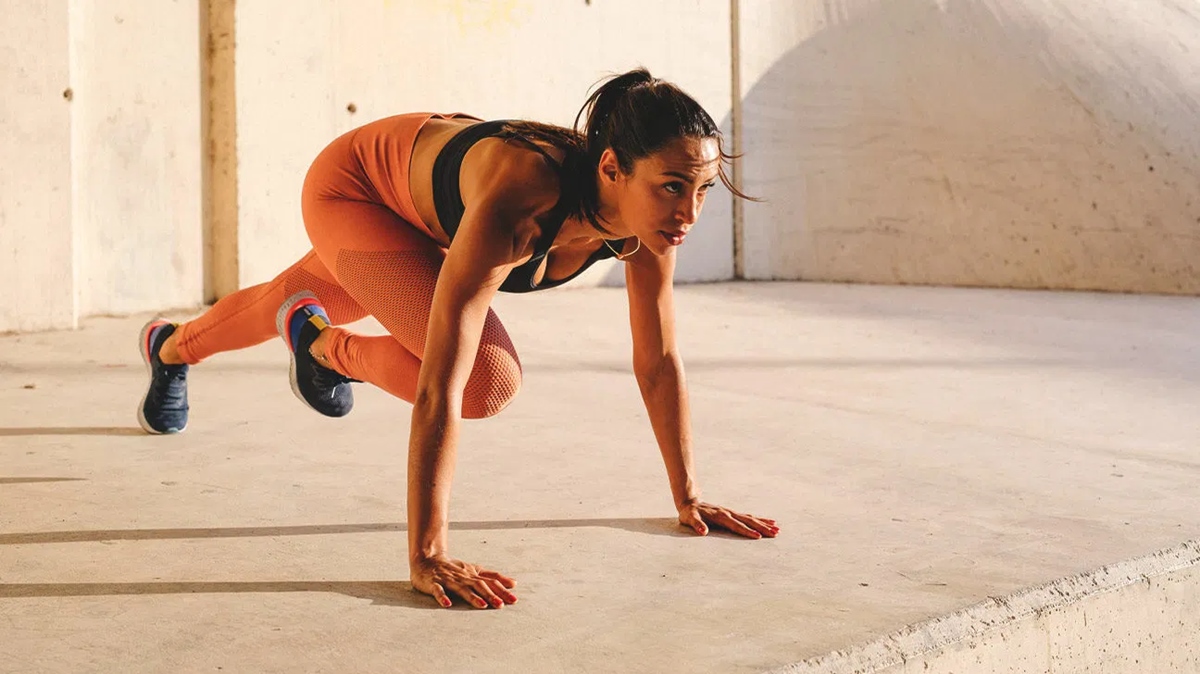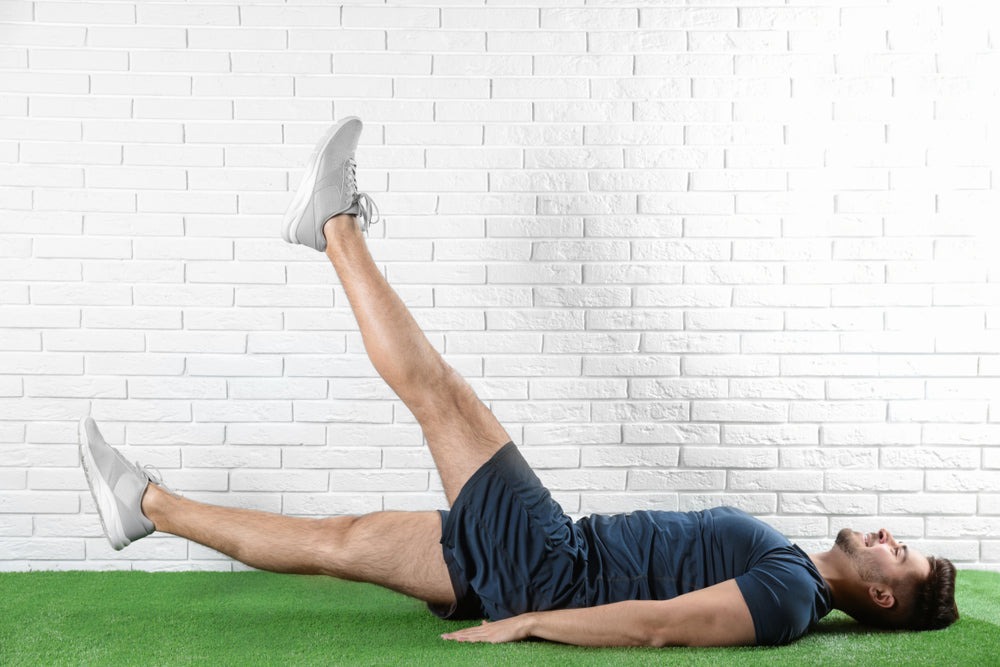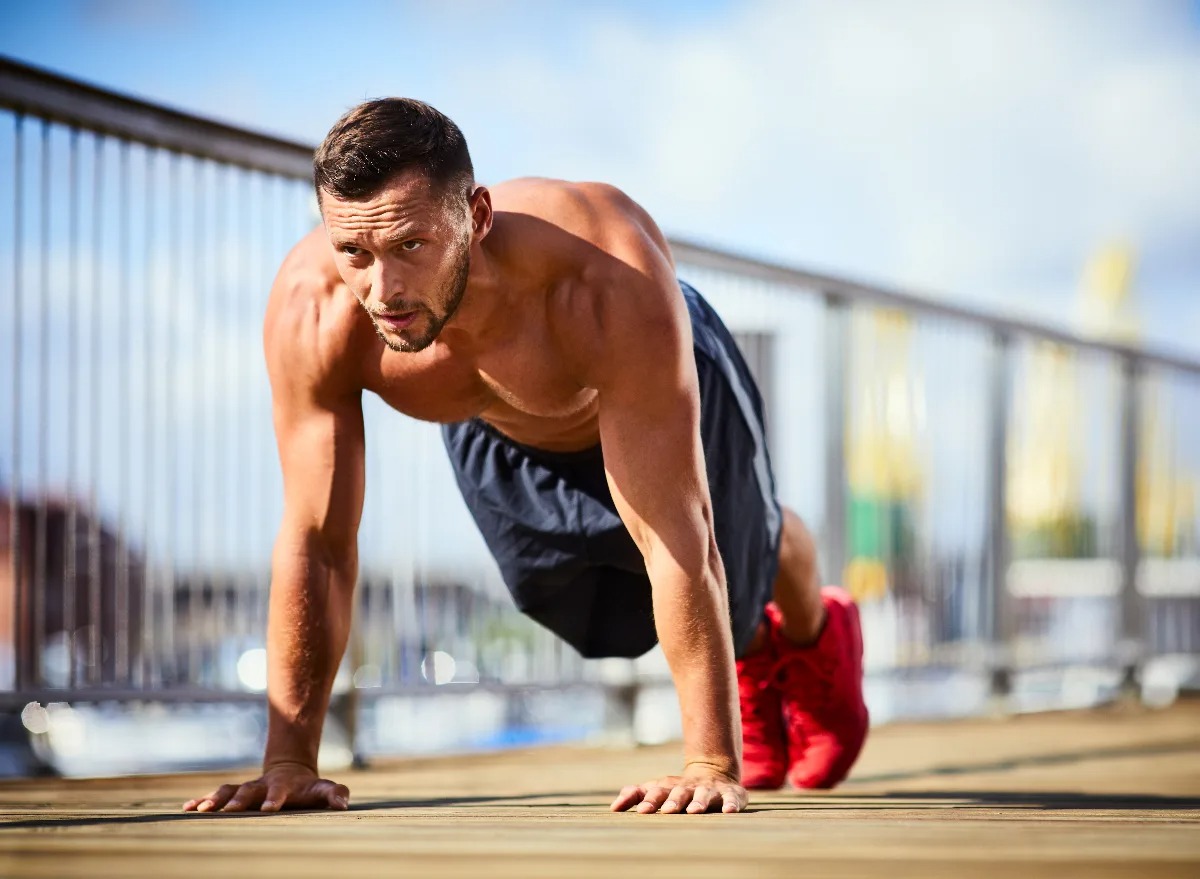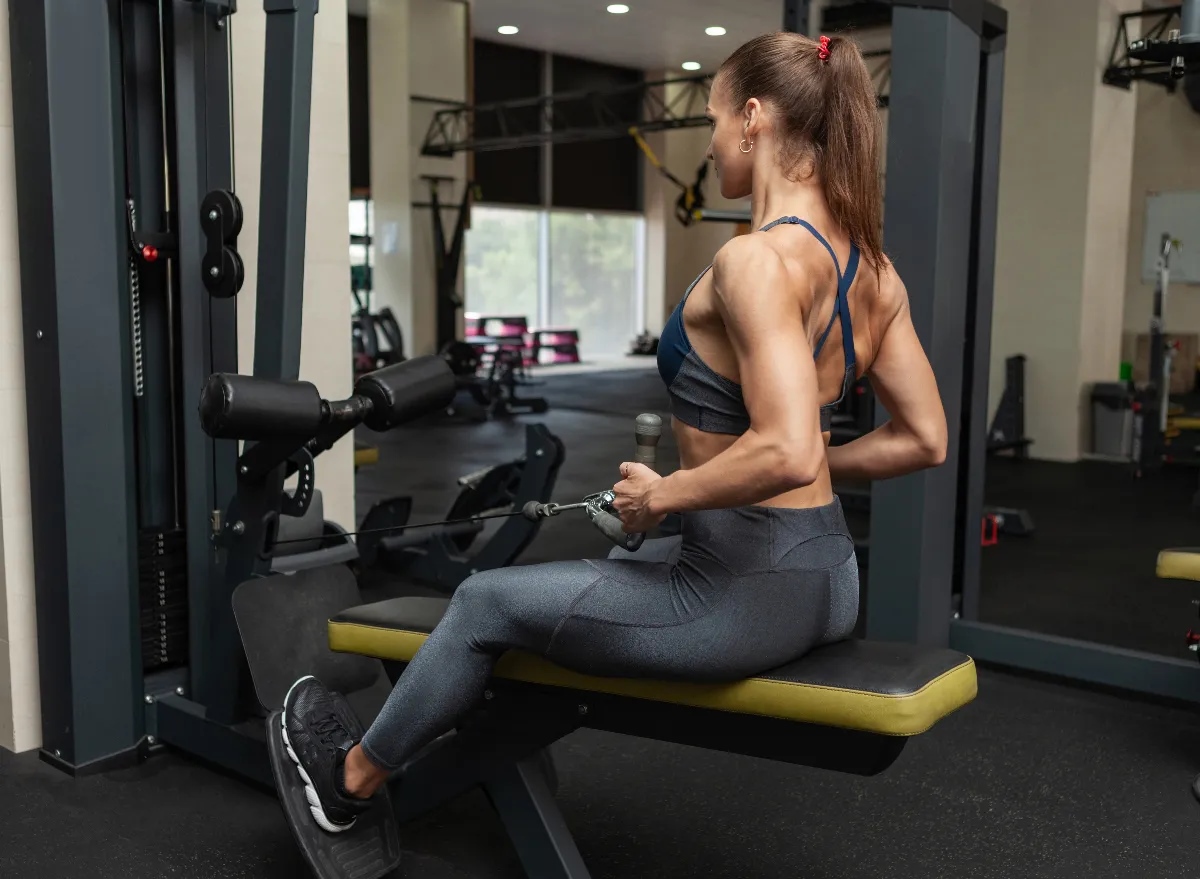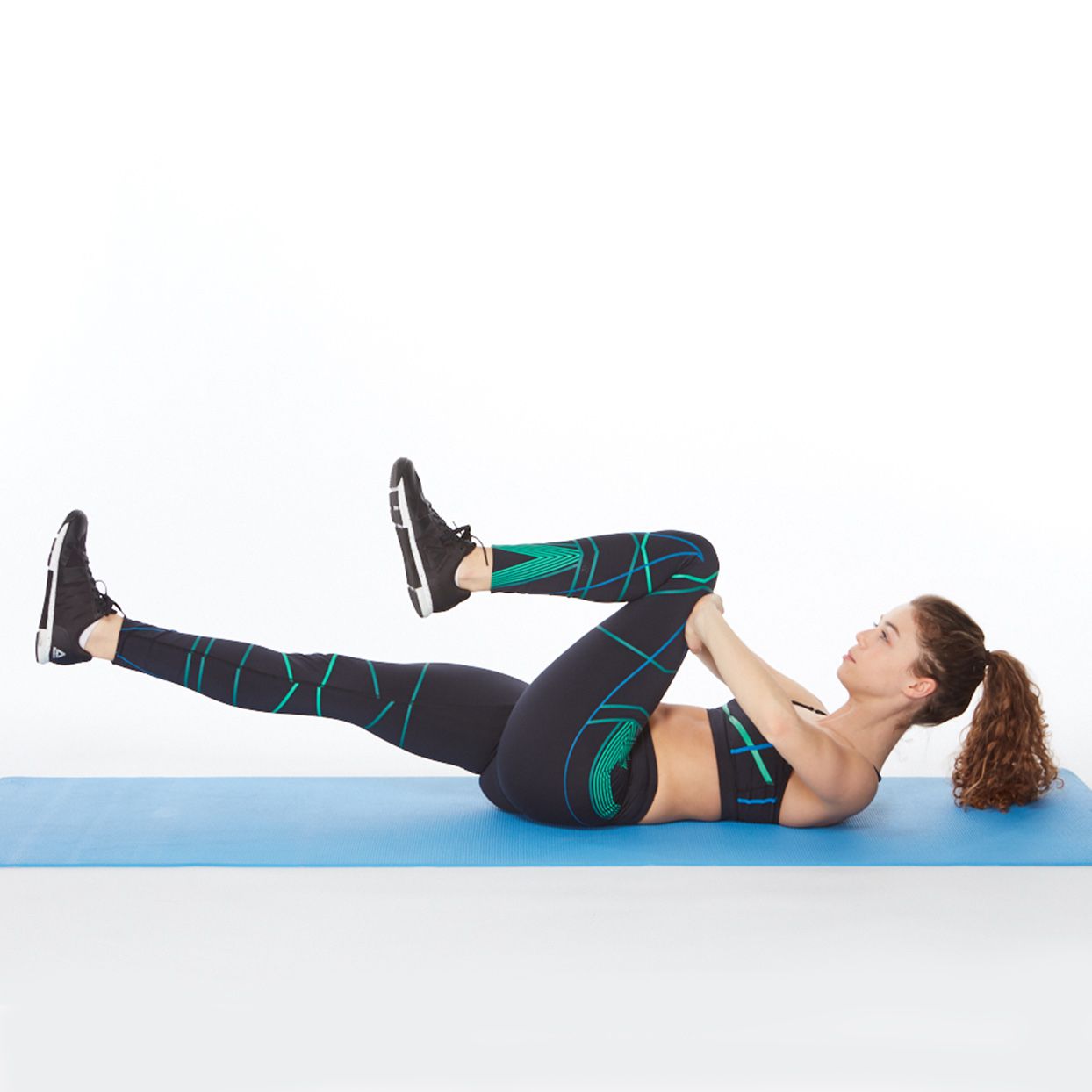

Featured
What Is The Best Exercise For Lower Abs
Modified: January 2, 2024
Discover the featured exercise that effectively targets your lower abs and helps you achieve your fitness goals. Find out the best workout for toned and defined lower abs.
Introduction
The lower abs are often the most challenging area to tone and strengthen. Many people struggle with stubborn belly fat and finding effective exercises to target this specific region. However, with the right combination of exercises, dedication, and proper form, you can achieve a sculpted and defined lower abs.
The lower abs refer to the muscles located in the lower part of the rectus abdominis, specifically below the belly button. These muscles not only play a crucial role in core stability but also contribute to overall body strength and posture.
While spot reduction is not possible, focusing on lower ab exercises can help strengthen and tone this region. By incorporating these exercises into your fitness routine along with a balanced diet and overall strength training, you can see visible results over time.
Before diving into the best exercises for lower abs, it’s important to understand that everyone’s body is different. Factors such as genetics, body composition, and overall fitness level can affect how quickly you see results. It’s crucial to listen to your body and progress at a pace that is comfortable for you.
In this article, we will explore some of the most effective lower ab exercises that target the muscles in this area. We will also provide tips on maximizing the effectiveness of your workout and achieving the desired results.
Understanding the Lower Abs
Before we delve into the best exercises for lower abs, it’s important to have a basic understanding of the muscles in this area. The lower abs are a part of the larger group of muscles known as the abdominal muscles.
The abdominal muscles are responsible for providing stability and support to the spine, aiding in posture, and facilitating movement. They can be categorized into different sections, such as the rectus abdominis, obliques, and transverse abdominis.
The rectus abdominis is the muscle responsible for the coveted “six-pack” appearance. It runs vertically down the front of the abdomen and is divided into two halves, commonly referred to as the upper abs and lower abs.
The lower abs specifically refer to the portion of the rectus abdominis that is located below the belly button. This area tends to be the most challenging to target and tone because it often holds onto stubborn fat deposits.
In addition to aesthetics, having strong lower abs is essential for overall core strength and stability. These muscles work in conjunction with the other abdominal muscles and the muscles of the back to support movements such as twisting, bending, and maintaining proper posture.
When it comes to training the lower abs, it is important to note that spot reduction is not possible. This means that performing endless sets of lower ab exercises will not magically burn fat solely in that area.
To effectively strengthen and tone the lower abs, it’s important to adopt a comprehensive approach that includes a combination of cardiovascular exercise, full-body strength training, and a healthy diet. This will help reduce overall body fat and reveal the muscles underneath.
Now that we have a better understanding of the lower abdominals, let’s explore the best exercises that specifically target this area and help you achieve a strong and defined lower abs.
Factors to Consider Before Exercising Lower Abs
Before starting any exercise routine, it’s important to consider certain factors that can impact your lower ab workouts. Taking these factors into account will help ensure a safe and effective training session. Here are some key factors to consider:
1. Fitness Level: Assessing your current fitness level is essential before targeting the lower abs. If you’re a beginner, it’s recommended to start with basic core strengthening exercises to build a foundation before progressing to more advanced exercises.
2. Core Stability: Having a strong core is crucial for performing lower ab exercises safely and effectively. It’s important to develop stability in the entire core, including the lower back, obliques, and transverse abdominis, to support and protect the lower abs during workouts.
3. Proper Form and Technique: Performing exercises with correct form is essential to avoid injury and maximize results. Before starting any lower ab exercises, take the time to learn and understand the proper form and technique for each movement.
4. Injury or Medical Conditions: If you have any pre-existing injuries or medical conditions that affect the abdominal area, it’s crucial to consult with a healthcare professional or a certified fitness trainer before engaging in lower ab exercises. They can provide you with appropriate modifications or alternatives to ensure safety and prevent further injury.
5. Nutrition and Hydration: A balanced diet and proper hydration play a crucial role in overall fitness and muscle development. Fueling your body with nutritious foods and staying hydrated will support your lower ab workout and aid in recovery and muscle growth.
6. Consistency and Progression: Consistency is key when it comes to seeing results. Consistently performing lower ab exercises, along with a balanced exercise routine, will help you achieve your goals. Additionally, gradually increasing the intensity or difficulty of the exercises over time will promote progress and prevent plateauing.
By considering these factors, you can ensure that your lower ab workouts are safe, effective, and tailored to your individual needs and goals. Now, let’s move on to explore the best exercises specifically targeting the lower abs.
Best Exercises for Lower Abs
When it comes to targeting the lower abs, it’s important to include a variety of exercises that engage and challenge this specific region. Here are some of the best lower ab exercises that you can incorporate into your fitness routine:
- Reverse Crunches: Lie on your back with your legs bent and feet off the ground. Contract your abs and lift your hips off the floor, bringing your knees towards your chest. Slowly lower back down and repeat for the desired number of reps.
- Bicycle Crunches: Lie on your back and bring your knees towards your chest. Place your hands behind your head and lift your upper body off the ground. Straighten your right leg while twisting your upper body to bring your left elbow towards your right knee. Repeat on the other side, alternating in a cycling motion.
- Leg Raises: Lie flat on your back with your legs extended. Lift your legs off the ground, keeping them straight, until they are perpendicular to the floor. Slowly lower them back down without touching the ground and repeat.
- Mountain Climbers: Begin in a plank position with your hands directly under your shoulders. Drive one knee towards your chest, then quickly switch to the other knee in a running motion. Keep your core engaged throughout.
- Planks: Get into a forearm plank position, resting on your forearms and toes. Ensure your body is in a straight line from head to toe. Hold this position for a specified time, engaging your core the entire time.
- Scissor Kicks: Lie flat on your back with your legs lifted slightly off the ground. Cross one leg over the other, then switch positions by scissoring your legs in a controlled motion. Keep your core engaged throughout the exercise.
- Russian Twists: Sit on the ground with your knees bent and feet lifted off the ground. Hold a weight or medicine ball in front of your chest. Twist your torso to one side, touching the weight or ball to the ground beside you. Return to the starting position and repeat on the other side.
- Hanging Leg Raises: Hang from a pull-up bar with your legs straight and together. Lift your legs towards your chest, keeping them straight, until they form a 90-degree angle. Slowly lower them back down and repeat.
- Lying Leg Raises: Lie on your back with your legs extended. Place your hands under your glutes for support. Lift your legs towards the ceiling, keeping them straight, until your hips come off the ground. Slowly lower them back down without touching the ground and repeat.
- Pilates Hundred: Lie on your back with your legs lifted in a tabletop position and arms extended by your sides. Pump your arms up and down while keeping them straight, inhaling for five counts and exhaling for five counts. Continue for a specified number of breaths.
Remember to perform each exercise with proper form and technique, focusing on engaging the lower abs throughout the movement. Incorporate these exercises into your routine and aim for 2-3 sets of 10-15 repetitions for each exercise.
Now that you’re familiar with some of the best exercises for targeting the lower abs, let’s move on to the next section where we’ll share some tips to maximize the effectiveness of your lower ab workout.
Reverse Crunches
Reverse crunches are an effective exercise for targeting the lower abs. By lifting your hips off the floor and bringing your knees towards your chest, you engage the lower abdominal muscles and strengthen the core. Here’s how to perform reverse crunches with proper form:
- Start by lying on your back with your arms by your sides and palms facing down.
- Bend your knees and lift your feet off the ground, so your thighs are perpendicular to the floor.
- Keep your lower back pressed into the ground throughout the exercise.
- Engage your core muscles and exhale as you slowly lift your hips off the floor.
- Bring your knees towards your chest, contracting your lower abs.
- Pause at the top for a moment, then inhale as you lower your hips back to the starting position.
- Repeat for the desired number of repetitions.
It’s important to focus on controlled movements and avoid using momentum to perform reverse crunches. By maintaining proper form, you can effectively target the lower abs and minimize strain on the lower back.
If you find it challenging to lift your hips off the floor, you can modify the exercise by bending your knees at a 90-degree angle instead of keeping your legs straight. This modification reduces the lever arm, making it easier to engage the lower abs.
Remember to breathe throughout the exercise. Exhale as you lift your hips and contract your lower abs, and inhale as you lower your hips back down.
Incorporate reverse crunches into your lower ab workout routine by starting with 2-3 sets of 10-15 repetitions. As you build strength, you can increase the number of sets or repetitions to further challenge your lower abs.
Continue reading to learn about the next exercise for the lower abs: Bicycle Crunches.
Bicycle Crunches
Bicycle crunches are a highly effective exercise for targeting the lower abs as well as the obliques. This dynamic movement engages multiple muscles in your core, helping to strengthen and tone the lower abs. Here’s how to perform bicycle crunches correctly:
- Start by lying on your back with your knees bent and feet flat on the floor.
- Place your hands lightly behind your head, ensuring you don’t pull on your neck.
- Lift your shoulder blades off the ground, engaging your core muscles.
- Simultaneously, bring your left knee towards your chest while rotating your torso to bring your right elbow towards your left knee.
- Extend your left leg out straight while bringing your right knee towards your chest and rotating your torso to bring your left elbow towards your right knee.
- Continue alternating the twisting motion, resembling a pedaling motion as if riding a bicycle.
Ensure that your shoulder blades stay lifted throughout the exercise and avoid pulling on your neck. Focus on the twisting motion, contracting your lower abs and obliques as you bring your elbow to your knee.
For beginners, start with a slow and controlled pace to maintain proper form. As you become more comfortable, you can increase the speed and intensity of the movement.
Bicycle crunches can be modified by performing the exercise with your knees bent at a 90-degree angle instead of extending your legs straight. This modification can be helpful if you have lower back issues or if you find the full range of motion too challenging.
Include bicycle crunches in your lower ab workout routine by aiming for 2-3 sets of 10-15 repetitions on each side. Remember to keep your breathing steady and exhale as you bring your elbow to your knee, and inhale as you extend your leg and rotate to the other side.
Now that you’ve learned about bicycle crunches, let’s move on to the next exercise for the lower abs: Leg Raises.
Leg Raises
Leg raises are a challenging yet highly effective exercise for targeting the lower abs. This exercise specifically targets the lower abdominal muscles, helping to build strength and definition in this area. Here’s how to perform leg raises:
- Start by lying flat on your back with your legs extended and your arms resting by your sides.
- Engage your core muscles and keep your lower back pressed into the floor throughout the exercise.
- Lift both legs off the ground, keeping them straight and together.
- Continue to raise your legs until they are perpendicular to the floor or as close as you can comfortably manage.
- Hold this position for a moment, feeling the contraction in your lower abs.
- Slowly lower your legs back down with control, stopping just before your feet touch the ground.
- Repeat the movement for the desired number of repetitions.
It’s crucial to maintain control and avoid swinging or using momentum during leg raises. This ensures that the focus remains on the lower abs and prevents strain on the lower back.
If you find it challenging to keep your legs straight, you can modify the exercise by slightly bending your knees. This modification can help reduce tension on the hamstrings and make the exercise more manageable while still targeting the lower abs effectively.
Breathing is also important during leg raises. Exhale as you lift your legs and contract your lower abs, and inhale as you lower your legs back down.
Include leg raises in your lower ab workout routine by starting with 2-3 sets of 10-15 repetitions. As you build strength, you can increase the number of sets or repetitions to further challenge your lower abs.
Now that you understand how to perform leg raises, let’s move on to the next exercise for the lower abs: Mountain Climbers.
Mountain Climbers
Mountain climbers are a dynamic exercise that targets not only the lower abs but also the entire core. It is a high-intensity exercise that can help increase abdominal strength and improve overall cardiovascular fitness. Here’s how to perform mountain climbers:
- Start in a plank position with your hands directly under your shoulders and your body in a straight line.
- Engage your core muscles by pulling your belly button towards your spine.
- Quickly bring one knee towards your chest while keeping the other leg extended.
- As you bring one leg back to the starting position, simultaneously switch and bring the other knee towards your chest.
- Continue alternating the movement, resembling a running motion.
It’s important to maintain a strong plank position throughout the exercise, keeping your hips in line with your shoulders and avoiding any sagging or arching of the back.
Focus on engaging your lower abs as you bring your knees towards your chest, exhaling with each knee drive. Keep the movements controlled and avoid rushing through the exercise to maintain proper form and maximize effectiveness.
If you’re new to mountain climbers or find them too challenging, you can modify the exercise by performing the movement at a slower pace or by placing your hands on an elevated surface such as a bench or step to reduce the intensity.
Include mountain climbers in your lower ab workout routine by starting with 2-3 sets of 10-15 repetitions on each leg. As you build strength and endurance, you can increase the duration or intensity of the exercise.
Now that you’ve learned about mountain climbers, let’s move on to the next exercise for the lower abs: Planks.
Planks
Planks are an incredibly effective exercise for targeting the lower abs and strengthening the entire core. They engage multiple muscles simultaneously, including the lower abs, obliques, and back muscles. Planks also help improve posture and stability. Here’s how to perform a standard plank:
- Begin in a push-up position with your hands directly under your shoulders and your toes on the ground.
- Engage your core muscles by pulling your belly button towards your spine.
- Hold your body in a straight line from head to toe, making sure not to arch or sag your back.
- Keep your neck aligned with your spine and gaze towards the floor.
- Hold this position for the desired duration, focusing on maintaining proper form and engaging your core throughout.
During planks, it’s important to breathe deeply and evenly. Inhale through your nose and exhale through your mouth to maintain a steady breathing pattern.
Variations of planks can further target the lower abs. For example, the forearm plank involves resting on your forearms instead of your hands, which can be more comfortable for some individuals. Side planks can be performed to engage the obliques, where you balance on one forearm and stack your feet or modify by having your knees on the ground.
As you progress, you can increase the duration of your plank holds. Aim to start with 30 seconds and gradually work towards holding for a minute or longer.
Include planks in your lower ab workout routine by incorporating them as a static hold or by adding them between other exercises as an active rest. Performing 2-3 sets of planks during your workout will help strengthen your lower abs and improve overall core stability and endurance.
Now that you’ve learned about planks, let’s move on to the next exercise for the lower abs: Scissor Kicks.
Scissor Kicks
Scissor kicks are a fantastic exercise for targeting the lower abs and improving hip flexor strength. This exercise involves controlled leg movements while keeping the core engaged, making it an effective way to strengthen and tone the lower abdominal muscles. Here’s how to perform scissor kicks:
- Lie flat on your back with your legs extended and your arms by your sides.
- Engage your core muscles by pulling your belly button towards your spine.
- Lift both legs off the ground to a height that is comfortable for you, ensuring your lower back remains pressed into the floor.
- Begin the scissor-like movement by crossing one leg over the other, alternating legs in an alternating fashion.
- Continue this scissor motion, making sure to keep your core engaged and your legs straight throughout the exercise.
While performing scissor kicks, be mindful to not let your lower back arch off the ground. Maintain proper form and control the movement, focusing on engaging your lower abs with each scissor motion.
You can modify the exercise by decreasing the range of motion and keeping your legs higher off the ground. Alternatively, if scissor kicks are too challenging, you can bend your knees slightly or place your hands underneath your glutes for added support.
As with any exercise, remember to breathe properly. Exhale as you cross your legs over, and inhale as you switch legs.
Incorporate scissor kicks into your lower ab workout routine by starting with 2-3 sets of 10-15 repetitions. As you progress and feel more comfortable, you can increase the number of sets or repetitions to challenge your lower abs further.
Now that you’ve learned about scissor kicks, let’s move on to the next exercise for the lower abs: Russian Twists.
Russian Twists
Russian twists are a popular exercise that targets the lower abs, obliques, and back muscles. This rotational movement engages the core muscles and helps improve stability and flexibility in the trunk. Here’s how to perform Russian twists:
- Start by sitting on the ground with your knees bent and your feet flat on the floor.
- Lean back slightly, ensuring your back remains straight and your core is engaged.
- Bring your hands together in front of your chest, interlocking your fingers or holding a weight or medicine ball.
- Twist your torso to one side, bringing your hands or the weight to touch the ground beside you.
- Exhale as you twist, engaging your abs, and inhale as you return to the starting position.
- Repeat the twist on the other side, alternating back and forth.
During Russian twists, maintain good posture with your chest lifted and your shoulders relaxed. Avoid rounding your back or sacrificing form for speed. Focus on engaging your core throughout the movement.
If you’re a beginner, you can modify the exercise by keeping your feet elevated off the ground or reducing the range of motion by not touching the ground with your hands or weight.
For added intensity, you can increase the weight of the object you’re holding or increase the speed of the twisting motion. However, always prioritize proper form over speed or weight.
Include Russian twists in your lower ab workout routine by starting with 2-3 sets of 10-15 repetitions on each side. As your core strength improves, you can increase the number of sets or repetitions to challenge your lower abs further.
Now that you’ve learned about Russian twists, let’s move on to the next exercise for the lower abs: Hanging Leg Raises.
Hanging Leg Raises
Hanging leg raises are an advanced exercise that targets the lower abs and engages the entire core. This movement requires upper body strength and stability, making it an effective exercise for building strength and definition in the lower abs. Here’s how to perform hanging leg raises:
- Find a secure pull-up bar or any stable overhead bar that can support your weight.
- Hang from the bar using an overhand grip, with your arms fully extended and your legs off the ground.
- Engage your core muscles by pulling your belly button towards your spine.
- With a controlled movement, lift your legs towards your chest, keeping them straight and together.
- Continue to raise your legs until they are parallel to the floor or as high as you comfortably can.
- Pause at the top for a moment, squeezing your lower abs, then slowly lower your legs back down to the starting position.
- Repeat the movement for the desired number of repetitions.
Make sure to maintain a slight bend in your arms to protect your joints and focus the tension on your core. Engage your grip strength throughout the exercise to maintain stability on the bar.
If hanging leg raises are too challenging, you can modify the exercise by performing knee raises instead. Bend your knees and bring them towards your chest, focusing on controlled movements and engaging your lower abs.
It’s important to control your momentum and avoid swinging during hanging leg raises. Slow and controlled movements allow for better engagement of the lower abs and prevent strain on the shoulders and lower back.
Include hanging leg raises in your lower ab workout routine by starting with 2-3 sets of 8-12 repetitions. As you develop greater strength and control, you can increase the difficulty by incorporating additional variations or increasing the number of sets or repetitions.
Now that you’ve learned about hanging leg raises, let’s move on to the next exercise for the lower abs: Lying Leg Raises.
Lying Leg Raises
Lying leg raises are an effective exercise for targeting the lower abs and building core strength. This exercise isolates the lower abdominal muscles, helping to tone and define this area. Here’s how to perform lying leg raises:
- Lie flat on your back with your legs extended and your arms by your sides.
- Engage your core by pulling your belly button towards your spine.
- Keeping your legs straight and together, slowly lift them off the ground until they form a 90-degree angle with your torso or as high as you comfortably can.
- Hold the position for a moment, feeling the contraction in your lower abs.
- With control, lower your legs back down to the starting position without letting them touch the ground.
- Repeat the movement for the desired number of repetitions.
During lying leg raises, it’s important to keep your lower back pressed into the ground and avoid any excessive arching or lifting. Maintaining proper form ensures that the focus remains on the lower abs and minimizes strain on the lower back.
If you find it challenging to keep your legs straight, you can modify the exercise by slightly bending your knees. This modification can help reduce tension on the hamstrings and make the exercise more manageable while still effectively targeting the lower abs.
Remember to breathe throughout the exercise. Exhale as you lift your legs and contract your lower abs, and inhale as you lower your legs back down.
Incorporate lying leg raises into your lower ab workout routine by starting with 2-3 sets of 10-15 repetitions. As you build strength, you can increase the number of sets or repetitions to further challenge your lower abs.
Now that you’ve learned about lying leg raises, let’s move on to the next exercise for the lower abs: Pilates Hundred.
Pilates Hundred
The Pilates Hundred is a classic exercise that targets the lower abs while also engaging the entire core. This dynamic movement challenges the abdominal muscles and helps improve overall core strength and endurance. Here’s how to perform the Pilates Hundred:
- Start by lying flat on your back with your legs extended and your arms by your sides.
- Engage your core muscles by pulling your belly button towards your spine.
- Lift your head, neck, and shoulders off the ground, keeping your gaze towards your abdomen.
- Extend your legs straight up towards the ceiling at a 45-degree angle.
- Begin pumping your arms up and down in a controlled manner while keeping them straight.
- Inhale for five counts, and exhale for five counts as you continue the pumping motion.
- Continue this breathing pattern and arm movement for a specified number of breaths or time.
During the Pilates Hundred, maintain a strong core activation and avoid arching your back or straining your neck. Focus on controlled movements and deep, rhythmic breathing to engage the lower abs and promote relaxation.
If you’re a beginner or have difficulty maintaining the extended leg position, you can modify the exercise by keeping your knees bent and your feet on the ground. This modification allows you to focus on the core engagement and breathing pattern without added strain.
Incorporate the Pilates Hundred into your lower ab workout routine by starting with 2-3 sets of 10-20 breaths or a specific duration, gradually increasing the intensity and duration as your core strength improves.
Now that you’ve learned about the Pilates Hundred, you have a comprehensive list of exercises to target and strengthen your lower abs. Remember to focus on proper form, engage your core, and progress at a pace that suits your fitness level and goals.
Let’s move on to the next section where we’ll share some valuable tips to maximize the effectiveness of your lower ab workout.
Tips for Effective Lower Ab Workout
To make the most out of your lower ab workout and achieve optimal results, consider implementing the following tips:
- Focus on Form: Proper form is crucial for targeting the lower abs effectively and preventing injury. Pay attention to your body alignment and engage your core throughout each exercise. Avoid using momentum and prioritize controlled movements.
- Warm-Up: Before starting your lower ab workout, warm up your body with some light cardiovascular exercises. This helps increase blood flow to the muscles, prepares your body for the workout, and reduces the risk of injury.
- Variety is Key: Include a variety of exercises that target the lower abs from different angles. This helps engage all the muscles in the lower abs and prevents muscle imbalances. Mix up your routine regularly to keep your muscles challenged.
- Combine Strength and Cardio: Incorporate cardiovascular exercises such as running, cycling, or jumping rope into your routine. Cardiovascular workouts help burn overall body fat, including the stubborn fat around the lower abs, contributing to a more defined look.
- Progress Gradually: Gradually increase the difficulty or intensity of your lower ab workouts as your strength and endurance improves. Add more repetitions, sets, or incorporate advanced variations of the exercises to keep challenging your muscles.
- Rest and Recovery: Allow for adequate rest and recovery time between workouts. Your muscles need time to repair and rebuild, which helps them grow stronger. Overtraining can lead to injury and hinder progress.
- Combine with a Healthy Diet: While exercise is important for strengthening the lower abs, a healthy diet is equally crucial. Maintain a balanced diet that includes lean proteins, fruits, vegetables, whole grains, and healthy fats to support muscle growth and reduce body fat.
- Stay Hydrated: Proper hydration is essential for overall health and optimal muscle function. Drink enough water throughout the day, especially during and after your workouts, to maintain hydration levels.
- Listen to Your Body: Pay attention to any discomfort or pain during your lower ab workouts. Stop or modify exercises if you experience any undue strain or discomfort. It’s important to listen to your body and prioritize your safety.
- Consistency is Key: Consistency is the key to seeing results. Aim to consistently perform your lower ab workouts at least 2-3 times per week. Stay committed to your fitness routine, and the results will follow.
By following these tips, you can make your lower ab workout more effective, efficient, and enjoyable. Remember to consult with a healthcare professional or certified fitness trainer if you have any specific concerns or unique considerations.
Now, armed with these tips, go ahead and crush your lower ab workout!
Conclusion
Targeting and strengthening the lower abs is a common fitness goal for many people. While it can be a challenging endeavor, incorporating the right exercises and following the tips mentioned can help you achieve a strong and defined lower abdominal region.
In this article, we explored a variety of exercises that specifically target the lower abs, including reverse crunches, bicycle crunches, leg raises, mountain climbers, planks, scissor kicks, Russian twists, hanging leg raises, lying leg raises, and the Pilates Hundred.
Remember to focus on proper form, engage your core, and progress at a pace that suits your fitness level and goals. Ensure you take into consideration factors such as your fitness level, core stability, injury or medical conditions, nutrition, and consistency in your workout routine.
Incorporating these exercises into your lower ab workout routine, along with a balanced diet and overall strength training, can help you strengthen and tone your lower abs over time.
So, start implementing these exercises and tips, paying attention to your form and listening to your body. Stay consistent and be patient as progress takes time. With determination, dedication, and the right approach, you can achieve the lower abs you’ve always desired.
Now, it’s time to put these insights into action and embark on your journey to stronger, more defined lower abs. Best of luck with your fitness goals!
